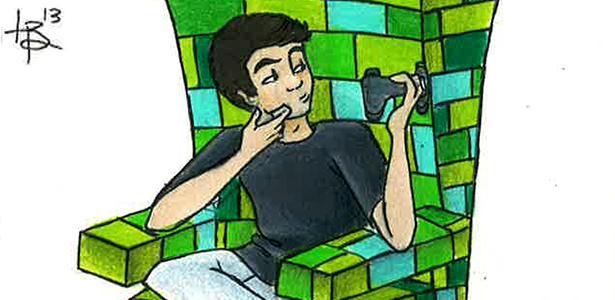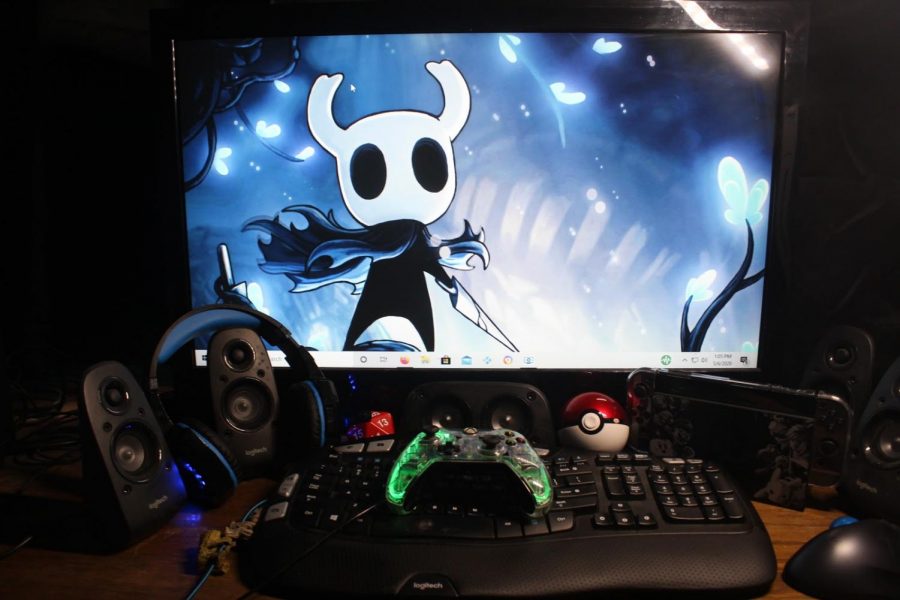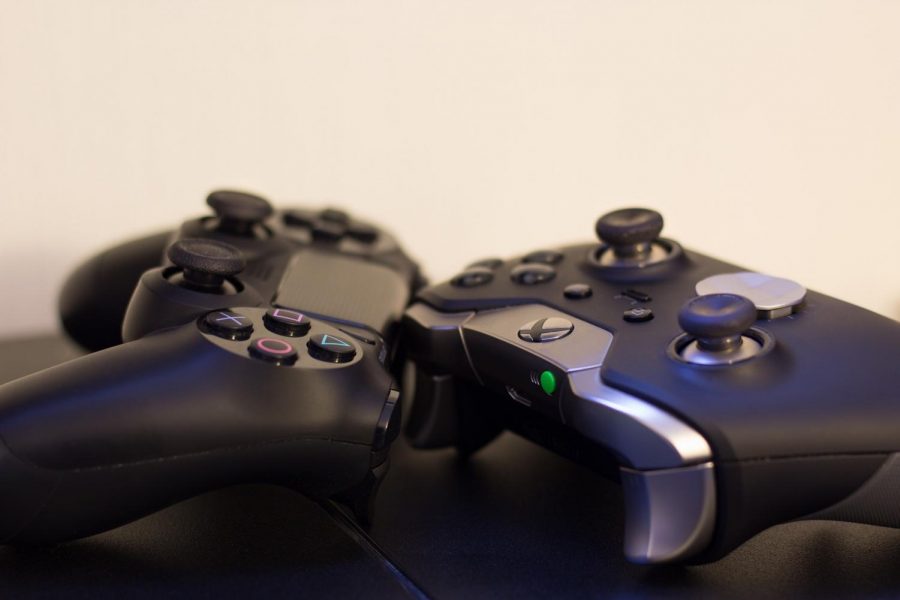Sony Computer Entertainment has finally released its fourth home gaming console in North America on Nov. 15, the PlayStation 4. With a continued emphasis on new technology, a ubiquitous network and better gaming, Sony wants the PS4 to replicate its dominate playing experience like the PlayStation One and PlayStation 2 eras before it.
At first glance, it’s obvious that the PS4’s design pays homage to the PlayStation 2’s latest slim model with its two differently textured tones and sharp edges. What you get from that, along with the unique elongated diamond shape and the color-changing, pulsing LED along the top, is a console with a fun, premium look that says, “It’s time to play.”
While there are slight issues with the design, like the “wobble” when the closest left corner is pushed down, one problem that could actually affect your life is the ports on the back of the system. Because of the shape of the console itself, it’s hard to actually see where your power and HDMI cords plug into, even when looking from above. So here’s hoping you’re not stuffing your PS4 into a tough-to-reach space before setting it up.
Along with a new console comes a new controller, the Dualshock 4. Sony’s controller layout has become a part of what the PlayStation brand is. Looking at the Dualshock tells a drastic change in form factor, but grabbing the controller instantly translates into familiarity.
The only thing I had to adjust to were the welcome changes, like the wider, textured palm grip and angular triggers that make the controller better for shooting games and overall comfort, though I can see a mixed reaction with the rimmed analog sticks. New additions like the Share and Options buttons, the touchpad and the LED lightbar were bothersome but they will neither become unobtrusive or your new favorite thing.
The touchpad was something I personally couldn’t test as much as I wanted to. “Killzone: Shadow Fall” used the touch-sensitive input as a second D-pad, swiping in four directions to select commands for your OWL companion. In “Assassin’s Creed 4: Black Flag,” I only got to use the touchpad for the map when clicked in. As far as I can tell, the touchpad is responsive when I needed to change my OWL to guard me during the frantic gunfights.
As for the Share and Options buttons, the replacement for the Select and Start buttons, they’re flush with the body of the controller, even its shape. Because of that and the harder pressure needed to push them, the buttons are awkward and hard to tell whether you need to push them inward or straight down, causing you to either not get a response or accidentally press it twice.
The colorful Light Bar is an odd one. With most of its potential relying on the PlayStation Camera that is not bundled with the PlayStation 4, it’s mostly used to identify players with different colors and for indicating in-game information like low health or reflecting surrounding environments, which is a cool novelty that will add to the games that use it properly. Buying the camera will allow compatible games to sense depth and your controller’s position to the screen.
On the software side, Sony developed the new home screen, Dynamic Menu. Divided into two sections for applications and the connected options. For the apps, you have pages that expand when you press down, opening more options like new add-on content, friend’s activity within the application and related items. Pressing up anywhere in the menu will bring you PlayStation Network options: friends, messages, chat, profile, notifications, etc.
Navigation between apps and the menu is seamless. Going from game to the PlayStation Store to check for add-on content and back to the game takes seconds and pauses the game exactly as it was without messing up what you were doing. And for apps that require a little more dedicated memory, your game will be suspended, but it’s just the same as a saved state and only loads for a few seconds instead of instantly. It’s quick enough to never be a bother. But as of right now, opening the Dynamic Menu lags a few times when running a graphic-heavy game while racing through menu items.
As for the menu items themselves, some may be hard to find if you don’t know what you’re looking for. After hitting the share button to save a gameplay clip to the hard drive, it took a while to realize my captures where under my profile instead of some video app.
Games developed natively on the PS4 are crisp and are able to push more characters on-screen, have more formed textures, realistic physics, a lot more particle effects and highly-detailed character models. The best way to describe the improvements to the games is “details.” In-game environments are more realized through steps in the sand, shifts in the shadows from multiple light sources, rain soaking into cement and cloth or the slightest facial movements when a character talks to you face-to-face.
The PlayStation 4 is an amazing step up from the previous generation but I feel it is not yet the true definition of what “next generation” is. The Dynamic Menu is simplified into as few sections as possible but still isn’t the easiest and could be more fully-featured. Luckily in the world of software updates, Sony plans to improve stability and expand compatibility like streaming previous-gen games and instantly playable demos of upcoming games.
Grade: A –



![[File Photo] On Wednesday, Feb. 19 Ed Madec coached what could be his final game as the Ram's head coach against the Reedley Tigers. Madec is currently under investigation for possible violations of CCCAA regulations.](https://www.therampageonline.com/wp-content/uploads/2020/03/Madec-900x600.jpg)










